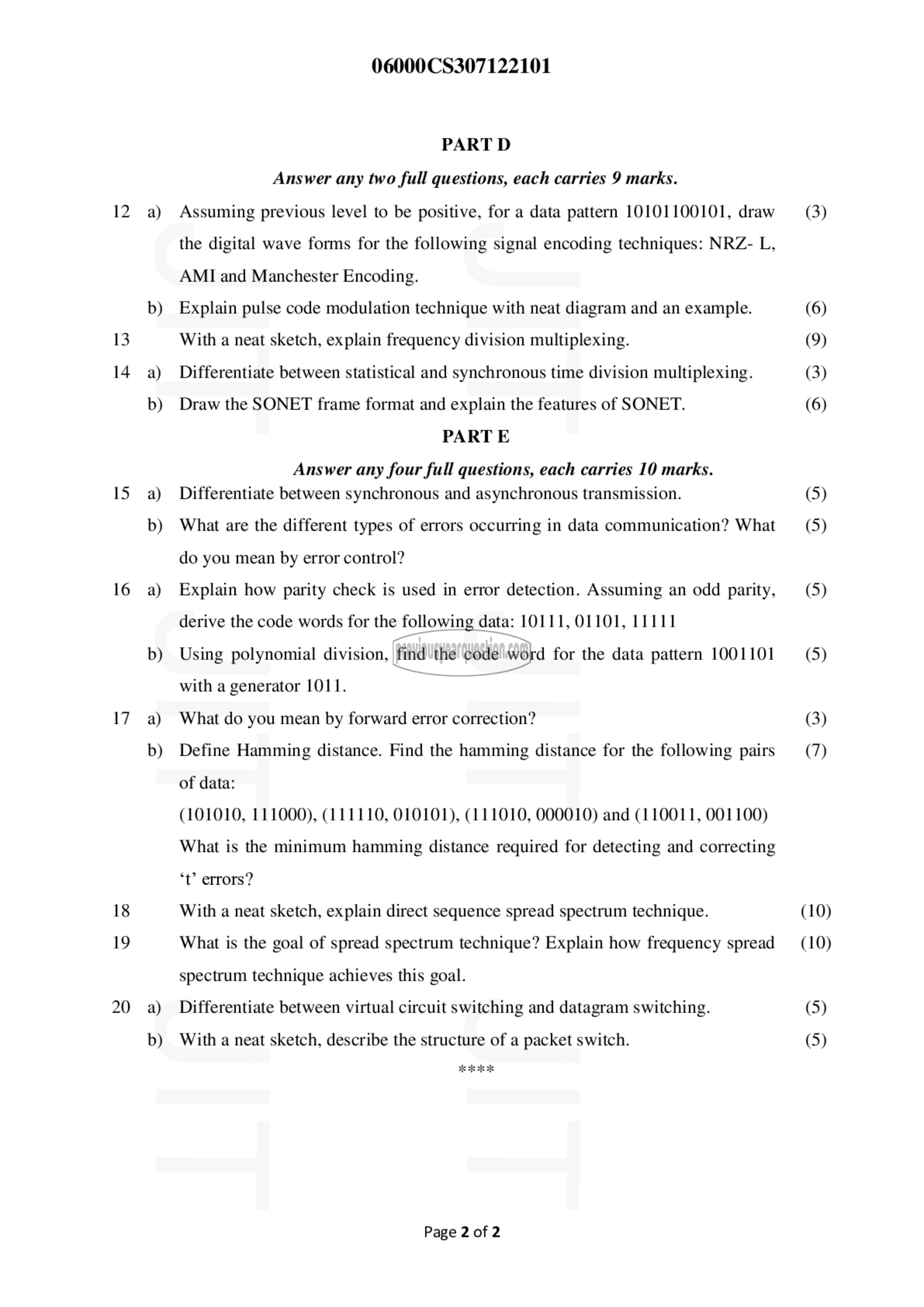APJ ABDUL KALAM TECHNOLOGICAL UNIVERSITY Previous Years Question Paper & Answer
Semester : SEMESTER 5
Subject : Data Communication
Year : 2022
Term : JANUARY
Branch : COMPUTER SCIENCE AND ENGINEERING
Scheme : 2015 Full Time
Course Code : CS 307
Page:2
12
13
14
15
16
17
18
19
20
a)
b)
a)
b)
a)
b)
a)
b)
a)
b)
a)
b)
06000CS307122101
PART D
Answer any two full questions, each carries 9 marks.
Assuming previous level to be positive, for a data pattern 10101100101, draw
the digital wave forms for the following signal encoding techniques: NRZ- L,
AMI and Manchester Encoding.
Explain pulse code modulation technique with neat diagram and an example.
With a neat sketch, explain frequency division multiplexing.
Differentiate between statistical and synchronous time division multiplexing.
Draw the SONET frame format and explain the features of SONET.
PART E
Answer any four full questions, each carries 10 marks.
Differentiate between synchronous and asynchronous transmission.
What are the different types of errors occurring in data communication? What
do you mean by error control?
Explain how parity check is used in error detection. Assuming an odd parity,
derive the code words for the following data: 10111, 01101, 11111
Using polynomial division, find the code word for the data pattern 1001101
with a generator 1011.
What do you mean by forward error correction?
Define Hamming distance. Find the hamming distance for the following pairs
of data:
(101010, 111000), (111110, 010101), (111010, 000010) and (110011, 001100)
What is the minimum hamming distance required for detecting and correcting
“٠۴ errors?
With a neat sketch, explain direct sequence spread spectrum technique.
What is the goal of spread spectrum technique? Explain how frequency spread
spectrum technique achieves this goal.
Differentiate between virtual circuit switching and datagram switching.
With a neat sketch, describe the structure of a packet switch.
Page 2 of 2
(3)
(6)
(9)
(3)
(6)
(5)
(5)
(5)
(5)
(3)
(7)
(10)
(10)
(5)
(5)
